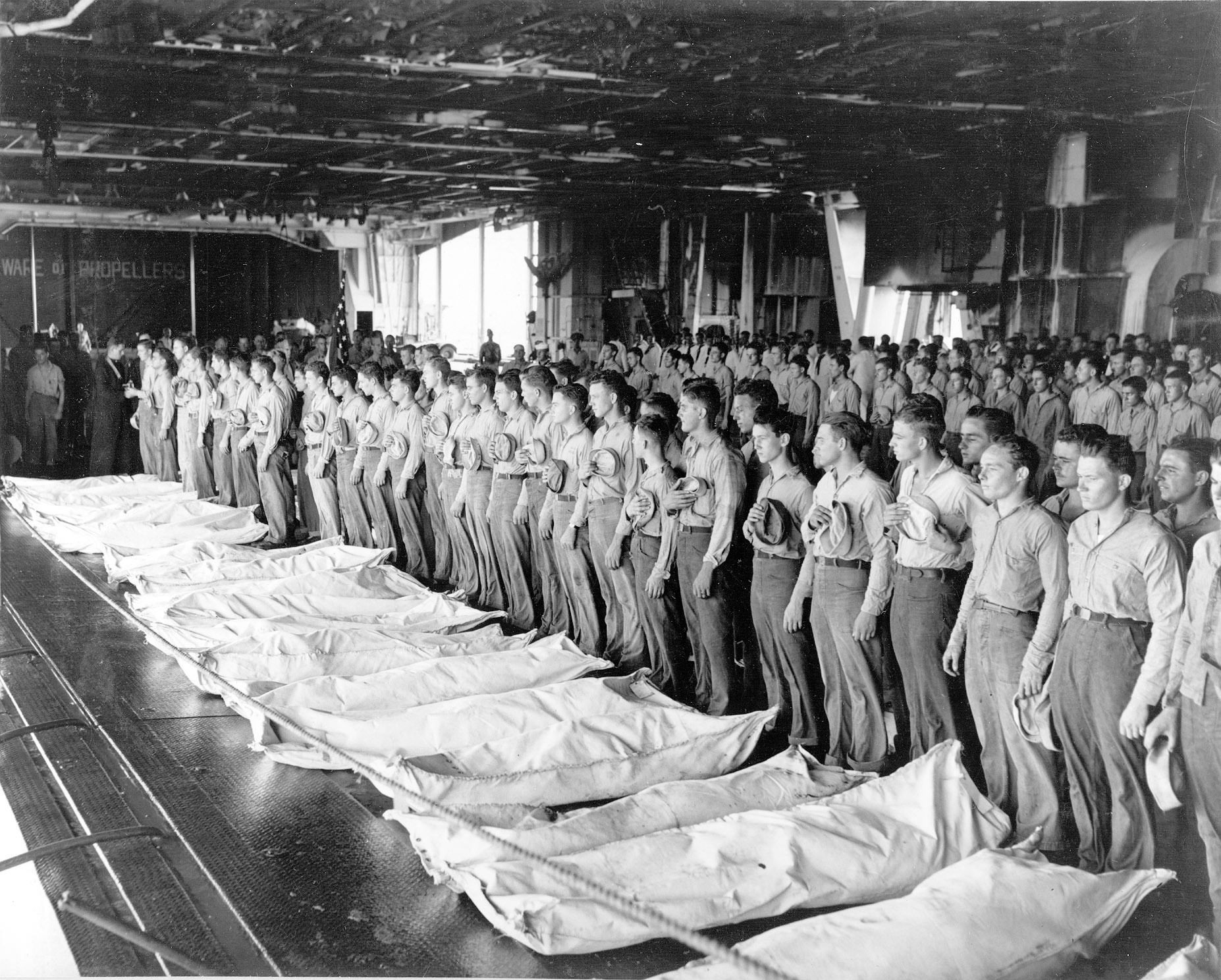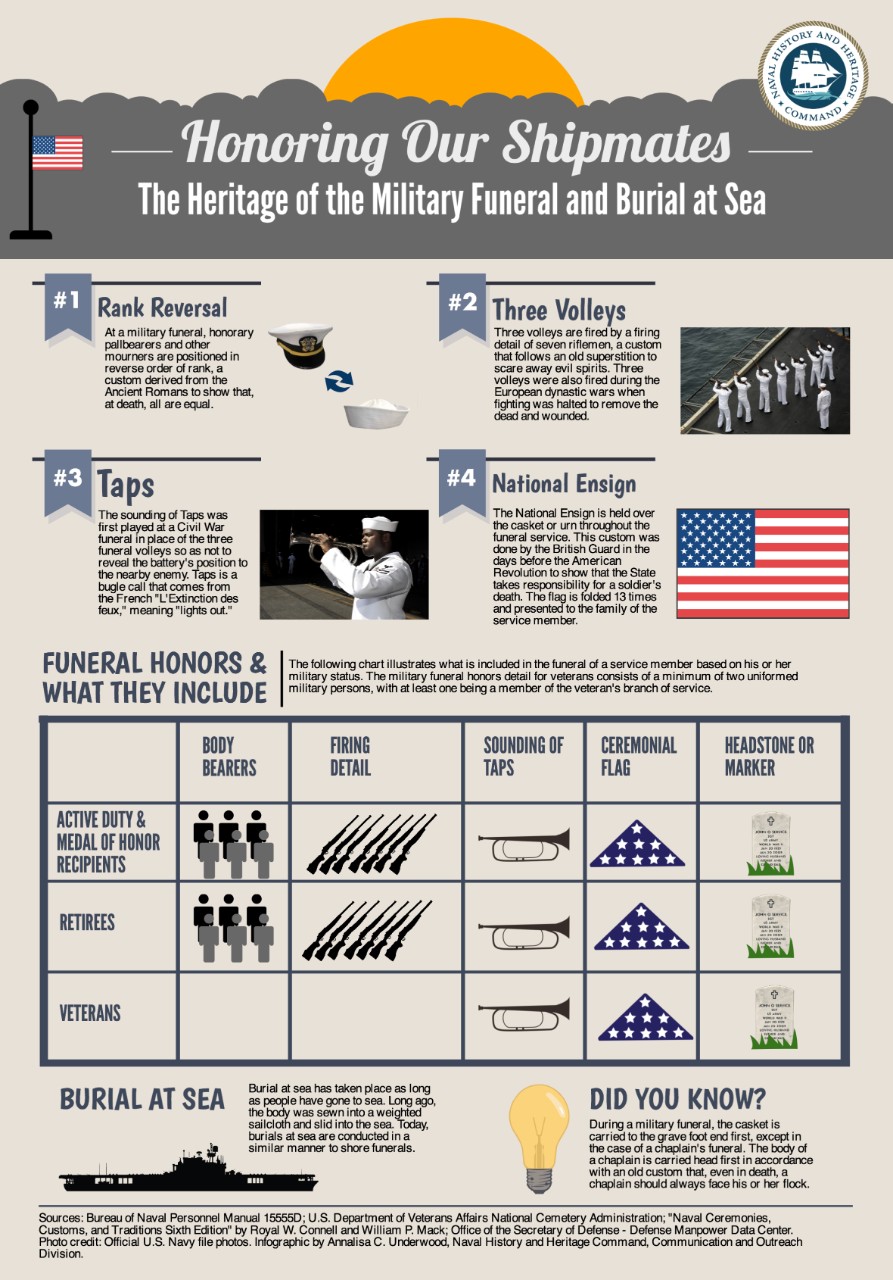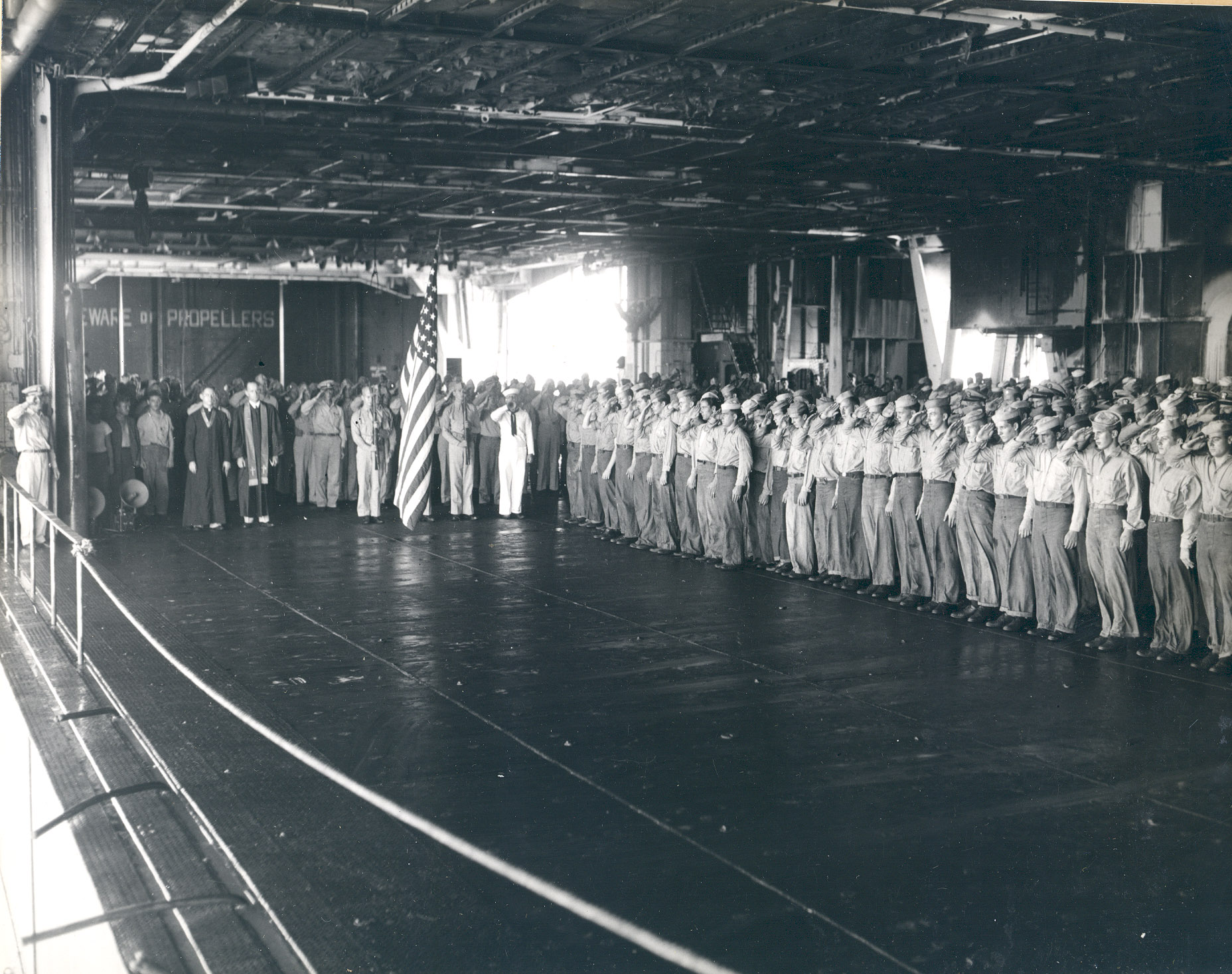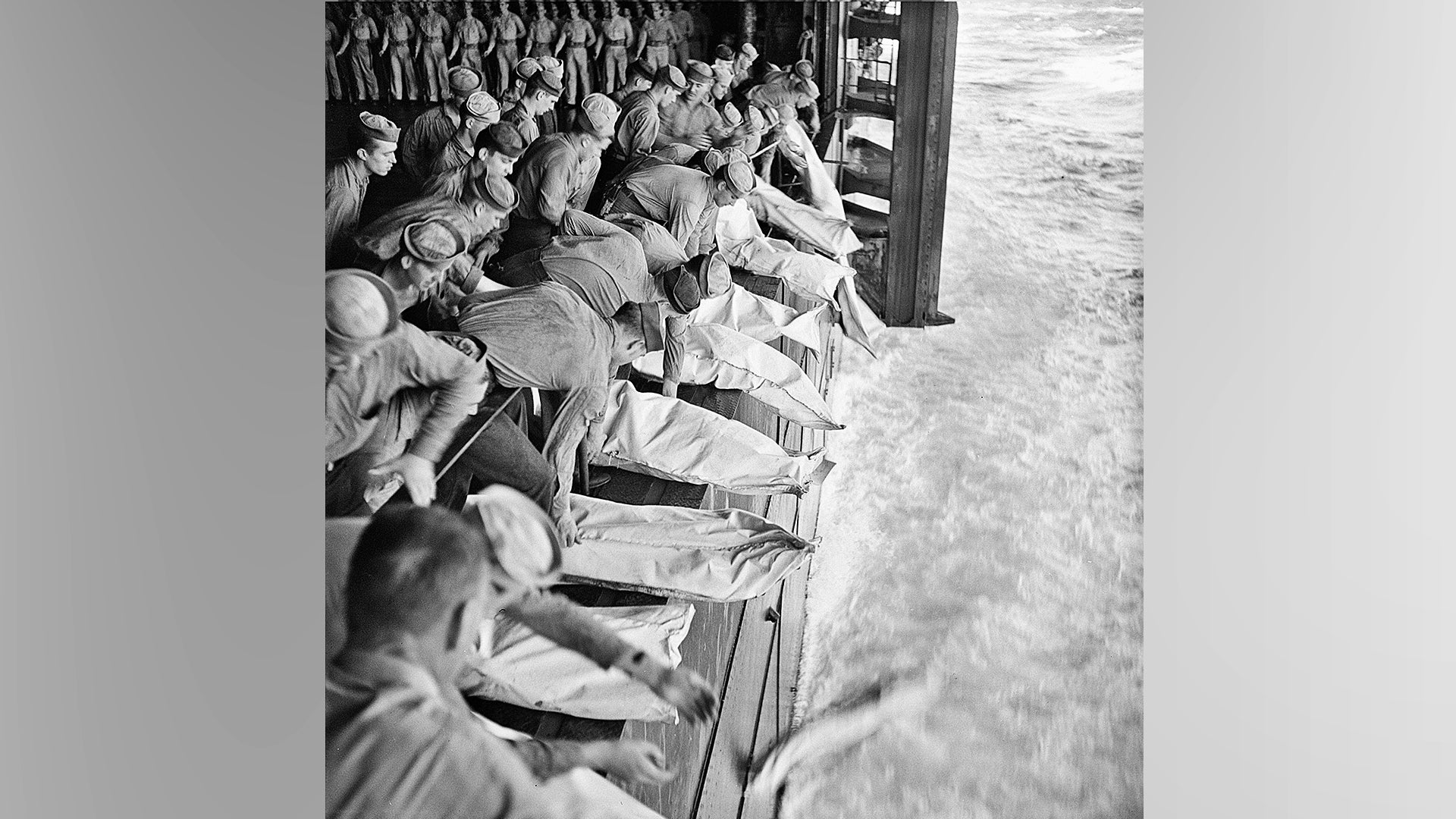When you are in the media business covering a very specific topic set you can’t help feel the false impression at times that you have seen most of what there is to be seen. But once in a while a new bit of information or a photo will really grab you. This was the case on Saturday while scrolling through Twitter. The photo above popped up and it just made me freeze and stare. The TV in the background seemed to go quiet. I felt transported. The image was uniquely heartbreaking, sailors releasing their fellow sailors overboard in white body bags—a mass burial at sea that somehow looked like another day on the job for the almost child-like faces tasked with such a solemn deed, but you knew that was anything but the case. These were battle-hardened men long before their time.
After probably a solid 30 seconds of gazing at that frozen moment in time, I read the short post. The image was taken at the height of World War II, during some of the darkest days in the Pacific.

I found the image in the U.S. National Archives. Its official description reads as such:
“Burial at sea for the officers and men of the USS Intrepid (CV-11) who lost their lives when the carrier was hit by Japanese bombs during operations in the Philippines.”
By Lt. Barrett Gallagher, November 26, 1944
What had actually happened was the Intrepid was on station with its task force off the Philippines on November 25th when, at high noon, a major Japanese raid on the flotilla resulted in two kamikazes barreling into Intrepid. A massive fire ensured. By the time the fires were put out hours later, 69 sailors had been killed and many more were wounded. The damage was so bad that Intrepid pulled off station and headed to San Francisco for repairs, finally arriving there nearly a month later on December 20th, 1944.
This short video is straight from the Intrepid Air And Space Museum and includes remarkable images from that day:

The incident became known as Intrepid’s darkest day. While the ferocity of the attack and the heroism that ensued is hard to fathom, the solemn image of what came a day later puts it all into perspective. Young sailors burying their friends and shipmates at sea en-masse. One day they were there—youthful and courageous men, all with dreams, hopes, and unique senses of humor—the next day they were not, their bodies consumed by the sea in strict naval tradition.

On this Memorial Day, I remember those sailors, putting it all on the line in the hell that was the Pacific Theater. They defended their ship and their shipmates with everything they had against an enemy who turned their own pilots and planes into hell-bent guided missiles.

Thanks in part to their ultimate sacrifice, America and its allies won the war, and the ship they died protecting still floats today, docked in Manhattan, their names inscribed inside, as a testament to their heroics and love of country.
Thanks will never be enough.
Contact the author: Tyler@thedrive.com
